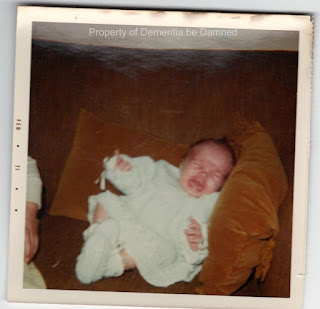Telling Stories
An article on NPR this week discussed the use of stories to open previously closed lines of communication with dementia patients. The basic approach is simple. Show the individual with dementia a picture and ask what is happening or ask what the individual is thinking about when they see the picture. While the individual with dementia may be unable to access memories directly, this approach may be opening a different avenue in the neural pathways to stimulate the brain. The advantage to the individual is that there is no wrong answer to the question being posed. This story telling approach to communication has been brought about through the Time Slips program.
I found the article intriguing because of the simplicity of the approach. There's no pressure on either the care provider or facilitator offering up a picture and none on the individual. It opens a conversation and encourages the individual to engage with the activity.
For example, Mom could show Lyn this picture and ask her what the baby is doing.
She can ask who is sitting next to the baby or why the baby is dressed up. Through a game of question and answer, Mom could encourage Lyn to pretend and to tell the story she sees in this picture.
Lyn is still capable of being engaged in a conversation as long as it is on her terms. Your conversation with her may involve a high amount of repetition, particularly if she's agitated about something. Unless she's agitated, however, she quickly trails off the topic. However, this may prove to be a useful tool in the future.
The picture is of Lyn, aged one month, by the way.
I found the article intriguing because of the simplicity of the approach. There's no pressure on either the care provider or facilitator offering up a picture and none on the individual. It opens a conversation and encourages the individual to engage with the activity.
For example, Mom could show Lyn this picture and ask her what the baby is doing.
 |
| Lyn - Age 1 month |
She can ask who is sitting next to the baby or why the baby is dressed up. Through a game of question and answer, Mom could encourage Lyn to pretend and to tell the story she sees in this picture.
Lyn is still capable of being engaged in a conversation as long as it is on her terms. Your conversation with her may involve a high amount of repetition, particularly if she's agitated about something. Unless she's agitated, however, she quickly trails off the topic. However, this may prove to be a useful tool in the future.
The picture is of Lyn, aged one month, by the way.
Comments
Post a Comment